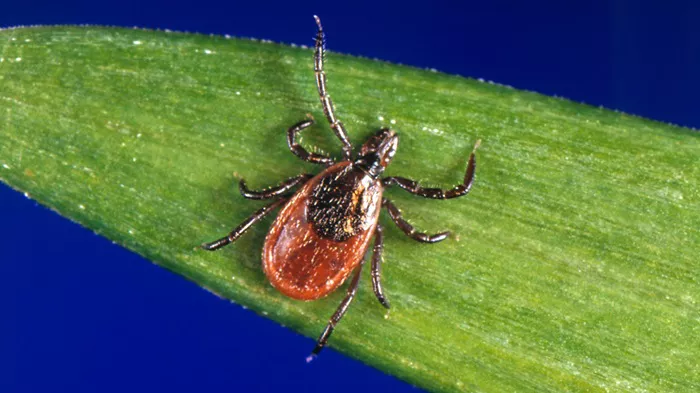Allergies are a common and often frustrating experience for millions of people worldwide. One of the most familiar and annoying symptoms of allergies is nasal congestion, or what we commonly call a “stuffy nose.” You may have noticed that during allergy season, your nose feels blocked, making it hard to breathe and often accompanied by sneezing, itching, and a runny nose. But why exactly does your nose get stuffy when you have allergies? Understanding the biological and physiological reasons behind nasal congestion can help you better manage your symptoms and improve your quality of life. This article explores the detailed mechanisms of allergic nasal congestion, what happens inside your nose, and what you can do about it.
What Happens Inside Your Nose During Allergies?
When allergens like pollen, dust mites, pet dander, or mold spores enter your nose, your immune system reacts. For people with allergies, the immune system mistakenly identifies these harmless particles as threats. This triggers an immune response aimed at protecting the body from what it perceives as harmful invaders. The reaction begins with the release of chemicals such as histamines and other inflammatory mediators. These substances cause swelling and inflammation of the nasal tissues.
The lining of your nose, called the nasal mucosa, contains tiny blood vessels and cells that respond to these chemical signals. When histamine is released, the blood vessels in the nasal lining expand, increasing blood flow to the area. This swelling narrows the nasal passages, making it difficult for air to flow freely. At the same time, the glands inside the nose produce excess mucus to flush out the irritants. The combination of swollen tissue and extra mucus leads to the sensation of nasal congestion or stuffiness.
The Role of Histamine in Nasal Congestion
Histamine is a key player in the allergic response and is largely responsible for the symptoms of nasal congestion. Once allergens trigger immune cells called mast cells to release histamine, it binds to receptors in the nasal tissues. This causes the blood vessels to dilate and the tissues to become inflamed. You may experience itching and sneezing as the body attempts to expel the allergens.
Histamine also stimulates mucus production in the nasal passages. This mucus acts as a protective barrier, trapping allergens and preventing them from entering the lungs. While this is helpful in theory, the excess mucus combined with swollen nasal tissue blocks airflow, making you feel congested. The itching and swelling worsen the discomfort, and this can continue for as long as allergens are present or your immune system remains activated.
Why Does Nasal Congestion Persist?
Nasal congestion from allergies often lasts longer than congestion caused by a common cold because the triggers remain present and the immune system continues to respond. Allergens like pollen can linger in the air for days or weeks during allergy seasons, causing repeated or prolonged exposure. Each time allergens contact your nasal lining, the immune response restarts, prolonging inflammation and congestion.
Moreover, chronic exposure to allergens can cause your nasal tissues to become hypersensitive. This means that even small amounts of allergens or irritants can provoke a strong allergic reaction. The nasal mucosa thickens and the blood vessels become more reactive, which can result in persistent stuffiness and difficulty breathing through your nose.
How Allergic Rhinitis Differs from Other Causes of Nasal Congestion
Not all nasal congestion is caused by allergies. For example, the common cold or sinus infections also cause nasal swelling and mucus production. However, allergic rhinitis is distinct because it is driven by an immune response to specific allergens rather than an infection. Infections tend to cause nasal congestion accompanied by other symptoms like fever, thick nasal discharge, and facial pain. Allergic rhinitis usually presents with clear mucus, sneezing, nasal itching, and eye irritation.
Allergic nasal congestion is often seasonal or linked to exposure to pets or dust, while infections are typically acute and resolve after a week or two. Understanding this difference is important for effective treatment, as allergy-induced congestion is better managed with antihistamines, nasal corticosteroids, or allergen avoidance rather than antibiotics.
The Impact of Nasal Congestion on Your Daily Life
A stuffy nose may seem like a minor inconvenience, but it can significantly affect your daily activities and quality of life. Nasal congestion disrupts sleep, leading to fatigue and difficulty concentrating during the day. It can impair your sense of smell and taste, reducing your enjoyment of food and environment. Additionally, mouth breathing caused by nasal blockage can lead to dry mouth, sore throat, and even dental issues.
Persistent nasal congestion may also contribute to headaches and sinus pressure. When the nasal passages are blocked, sinus drainage slows down, creating pressure and discomfort in the forehead, cheeks, and around the eyes. This can affect mood, productivity, and overall well-being, making it more than just a simple nuisance.
Strategies to Relieve Allergic Nasal Congestion
Managing allergic nasal congestion involves a combination of avoiding allergens, using medications, and sometimes making lifestyle adjustments. Avoidance is often the first step: staying indoors during high pollen days, using air purifiers, washing bedding frequently, and minimizing exposure to pets or dust.
Medications such as antihistamines block histamine receptors, reducing swelling and mucus production. Nasal corticosteroids are highly effective at decreasing inflammation and swelling in the nasal tissues, providing longer-lasting relief. Decongestant sprays can also relieve nasal blockage quickly but should be used sparingly to avoid rebound congestion.
Humidifiers can add moisture to dry indoor air, soothing irritated nasal passages. Saline nasal sprays help flush out allergens and thin mucus, making it easier to clear the nasal passages. In severe cases, allergy immunotherapy (allergy shots) may be recommended to reduce sensitivity to allergens over time.
When to See a Doctor About Nasal Congestion
If nasal congestion lasts for weeks despite treatment or is accompanied by severe symptoms like facial pain, fever, or persistent headaches, it’s important to seek medical advice. These could be signs of sinus infections or other underlying conditions. Additionally, if allergies severely impact your daily life or sleep, consulting an allergist can help identify specific triggers and develop a personalized treatment plan.
Allergy testing may be conducted to pinpoint the exact substances causing your symptoms. This knowledge allows for targeted avoidance strategies and treatments. In some cases, prescription medications or advanced therapies may be necessary to control symptoms and improve breathing.
The Future of Allergy Treatment and Nasal Congestion Relief
Research into allergy treatments continues to advance, offering hope for better relief from nasal congestion and other allergic symptoms. New medications targeting specific parts of the immune response are emerging, providing options with fewer side effects. Biologic therapies, which involve injectable antibodies, have shown promise in treating severe allergic diseases.
Innovations in allergy immunotherapy aim to make treatments shorter and more convenient, improving adherence and effectiveness. Personalized medicine, which tailors treatments based on genetic and environmental factors, is also a growing field that may revolutionize allergy care.
Additionally, technology such as smart nasal sprays and apps that monitor air quality and pollen counts help people anticipate and manage their allergies proactively, reducing the impact of nasal congestion.
Conclusion
A stuffy nose during allergies is not just a simple irritation but a complex immune reaction involving inflammation, swelling, and mucus production. Recognizing that nasal congestion is a sign of your body’s defense system at work helps you appreciate the importance of proper management. By learning how allergens trigger this response and employing effective strategies to minimize exposure and treat symptoms, you can regain control over your breathing and comfort.
Whether through lifestyle changes, medications, or professional medical care, relief is possible. Staying informed about allergy science and available treatments empowers you to breathe easier and enjoy life without the constant burden of a blocked nose.



































